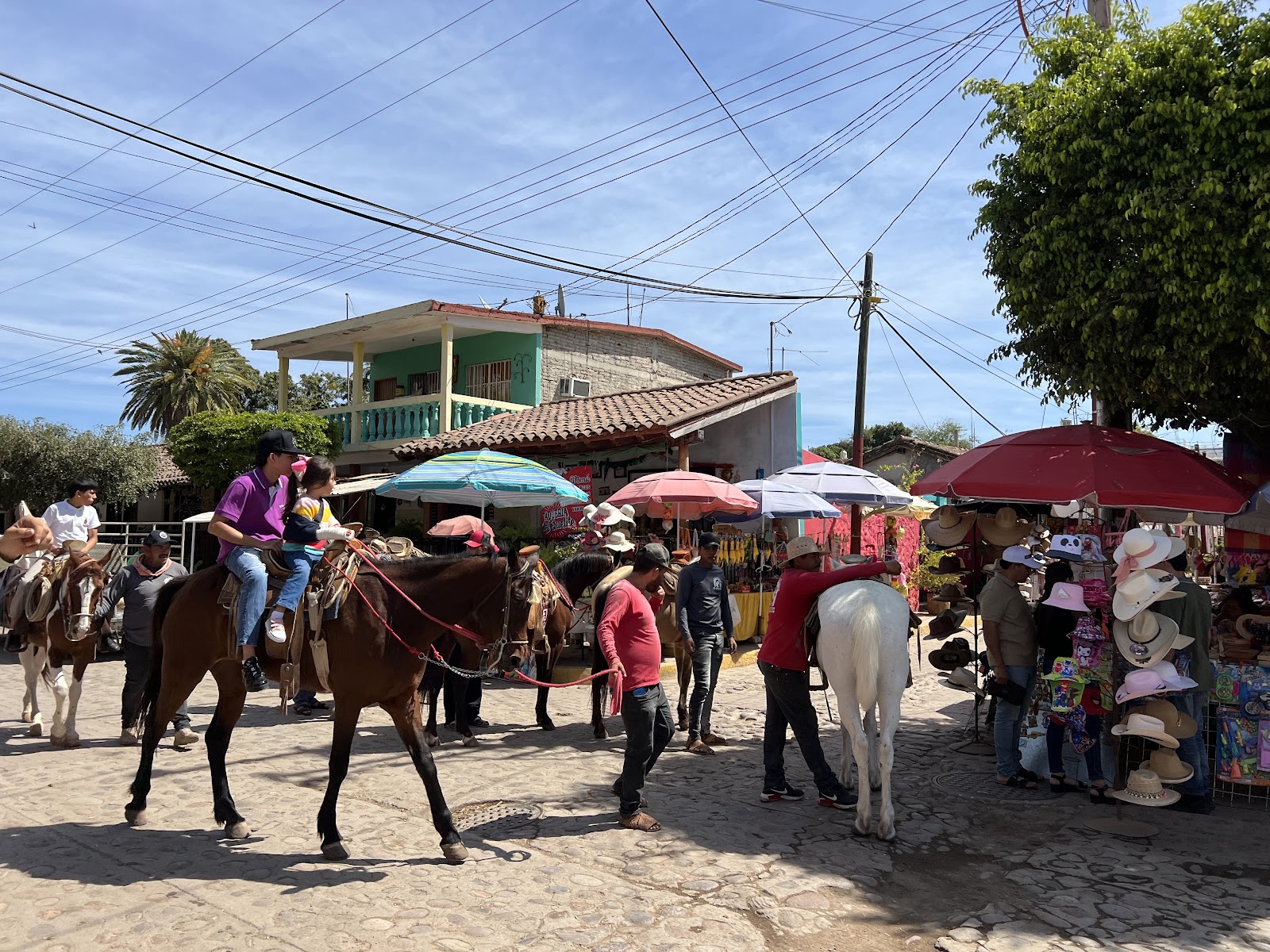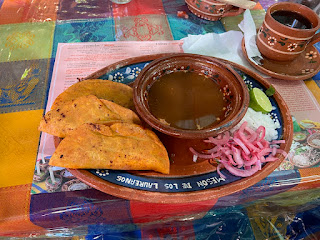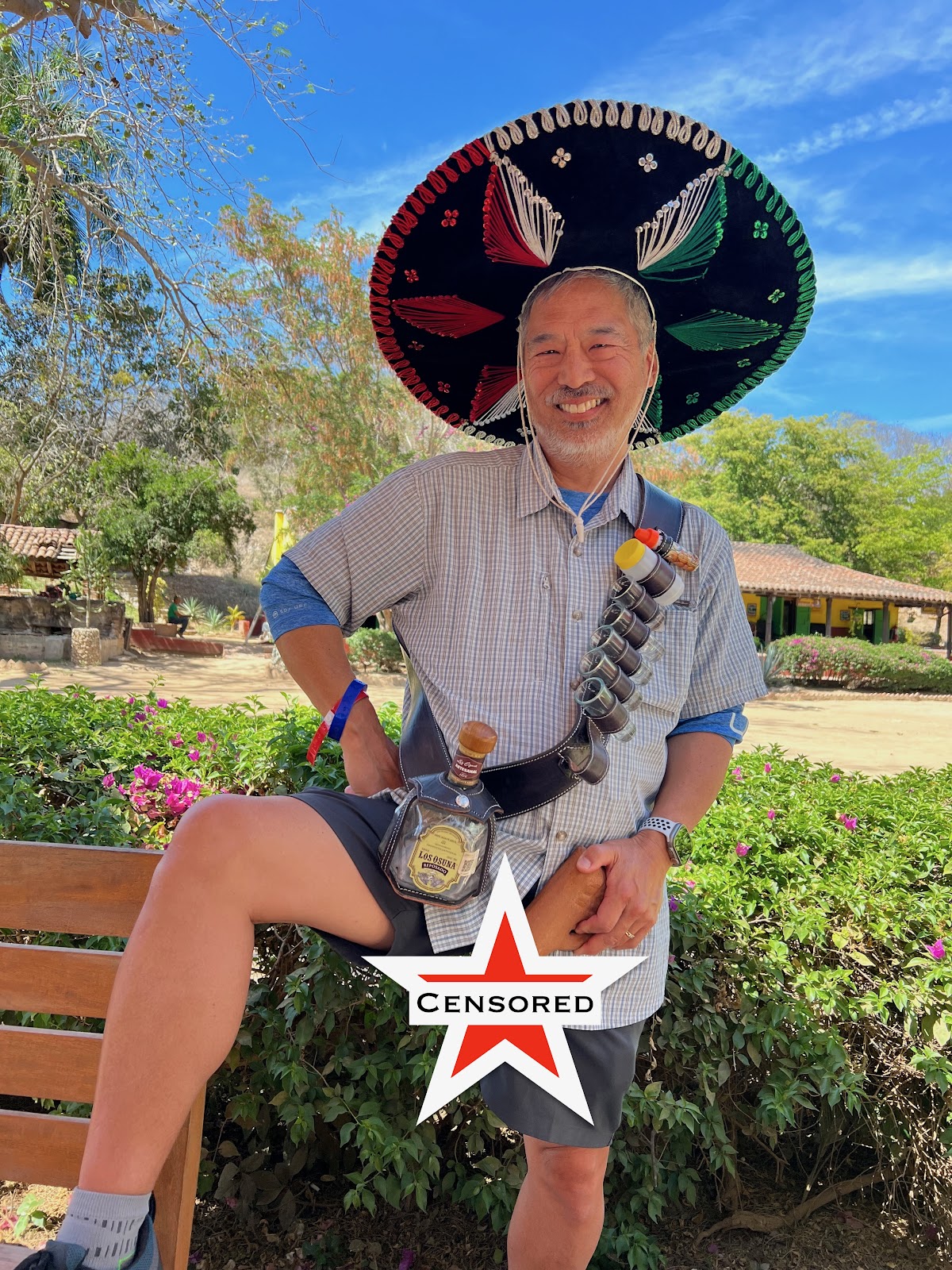Royal Villas Suite 1216 had two double beds, two large sitting chairs around a coffee table, one night stand between the beds and a small table by the sliding door. There was an tall closet for the TV with a few drawers and a dresser. There was no coffee maker or tea kettle in the room, and no microwave, mini-fridge or safe. Although spacious, it was furnished sparsely, with rudimentary amenities. There was only a very weak intermittent Wifi signal, so any serious work had to be done in the hotel lobby, and even there, the internet speed was no more than 5MBPS at best. The balcony did have a nice view of the beach and territorial views to the north from east to west.
Something any prospective guests should be aware of is that there is a dance club right next to the Carl's Jr. across the street that features a live band which fires up the dance floor at about 10pm, and blares at very loud levels until 2am. Suite 1216 was on the north side of the building so we had a direct line of sight to the dance floor and sound. Even with ear plugs, it was hard to sleep until after things shut down at 2am.
Staff at the bar, and pool side seemed programmed to nickle and dime guests. Getting hit with the surprise extra Eclipse Viewing party fee on the morning of the eclipse was a rude awakening. They should have made that amply clear on check in. The casual dining by the bar had decent enough service, while the sit down main restaurant was nice and not unreasonably priced, but it did seem strange that they were watching an action movie on a big screen TV with the volume up quite high until we asked them to turn it down so we could enjoy our dinner without screams and gunshots in the background. There was no way to charge drinks or meals to your room account, so you always had to have cash or credit card on you, even at the poolside. They also did not provide any complementary bottled water in the room.
While our travel agent described this as one of the best properties in the Golden zone and a 5 star hotel, I would have to say it is definitely more a 3-1/2 star hotel. It was comfortable, and felt safe enough, but did very poorly on amenities and services. Think more Quality Inn and not Hilton. I did check out the gym, and found that none of the powered equipment (treadmill, eliptical, stationary bicycle) worked. There were ample weights and plenty of room but the best feature of the gym was a water cooler using bottled water.
Taking an Uber to the airport seemed to be the best way not to get ripped off. The Uber app gives you a fixed price of under $20US that can be paid with credit card or Apple Pay in the app, while the taxis charge $30US or $500MX and only accept cash. While our Uber did get us to the airport on time and safely, although the app listed it as an UberX suitable for 4 passengers, what showed up was a beat up Nissan Versa with a trunk that was held shut with a bungie cord and no air conditioning. The seats were beat and there was a big gash in the dash board. It looked like a reject from the Rent-a-Wreck fleet. But it got the job done. I have only used Uber in the Fort Lauderdale and Miami areas where the Ubers are usually Mercedes, BMW or Audi sedans with meticulously detailed interiors.
We gave ourselves 3 hours to get through check in and security, but it turned out that WestJet didn't open its check in counters until 2 hours before the flight, so we were the first in line for the check in counters. They only had one agent working check in, so we have no idea how long the line got at the counter after we headed through security. Getting through security was surprisingly smooth. The boarding gate area however, was extremely crowded with people standing shoulder to shoulder as 2 flights were leaving at the same time. Once those two flights departed, congestion eased considerably so that our flight was able to embark pretty smoothly. Embarkation was via the tarmac with stairs. This must make boarding very difficult for people who have limited mobility. Our 737-800 was sporting a special Disney World paint scheme.
The flight was comfortable in Premium class with a nice beef short rib dinner and drinks during the 4.5hr flight. Ben watched The Color Purple, and thought it was a better movie than Oppenheimer, which had been awarded the Academy Award for best picture. You have to wonder if it was the all black cast that held it back from consideration for best picture.
We arrived at YVR International Airport in Vancouver BC just as the sun was about to dip below the horizon. The airport is very modern and clean, putting LAX thoroughly to shame as looking pretty 3rd world by comparison. Our Nexus membership greatly sped our journey through customs and immigration in the airport with no lines, one automated kiosk that scanned our Nexus cards and Passports, and a quick glance at a receipt and wave through by a customs and immigrations officer to the luggage pick up area. We got through even faster than flight crews.
All of our bags made the trip in good condtion and it was an easy shuttle ride back to the Jet Set Parking. They have a vending machine that scans your ticket. It then tells you which parking space your car is in, and opens a compartment with your keys.
There is a Costco between YVR and the highway back to the US so we managed to get in just before closing to get some Poutine (french fries with cheese curds and gravy), and chicken strips and fries for dinner. The place was packed, and because it is adjacent to Richmond, which is a huge Chinese enclave, nearly everyone in the store was Asian, making Janet a standout.
Our Nexus cards also saved us at least a half hour's wait at the Canada/US Border where we bypassed multiple lanes packed with cars in the Nexus lane where there were only 2 cars ahead of us when we got to stations. Having scanned our Nexus Cards as we drove up to the booth, the agent just looked through our windows to make sure we were the only occupants in the car, and she waved us on.
We were glad to be back home after a week in Mexico. The Total Eclipse of the Sun was totally worth the trip for Ben, although for Janet, she's good with One and Done. Eclipse chasing certainly entails a lot or uncertainties, anxiety, expenses and plenty of unscrupulous individuals taking advantage of the situation, but there is something indescribable about looking up at that black hole in the sky during the 4 minutes of totality. It really kind of puts us in our cosmic place.
Also, spending a week in one of the more modern and developed parts of Mexico, and yet seeing the contrasts between life there and life at home really help us appreciate more how good we have it in the USA.









.jpeg)
.jpeg)
.jpeg)
.jpeg)




.jpeg)














.jpeg)
























